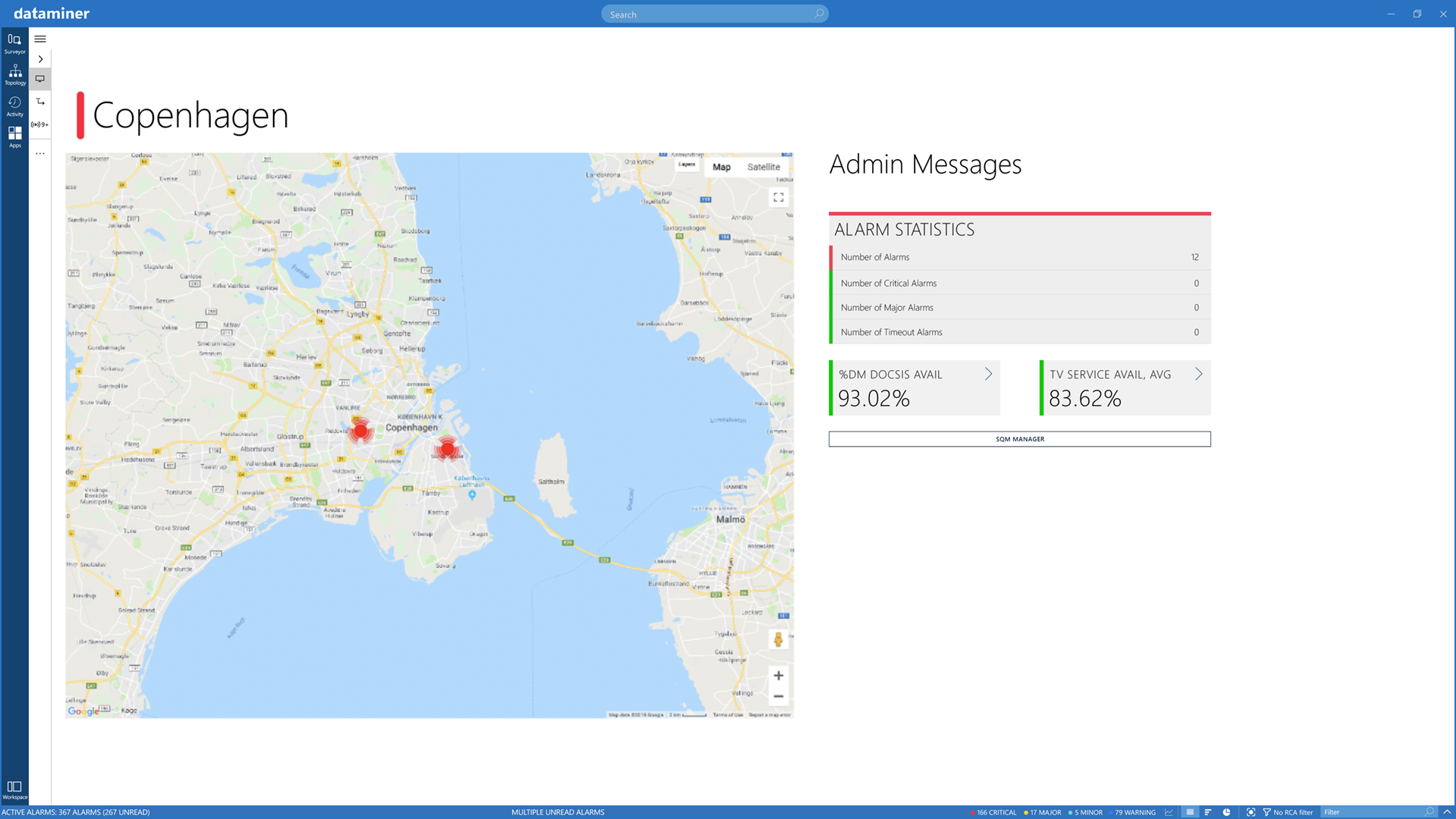Digital Terrestrial Television (DTT)
Digital Terrestrial Television has undergone big changes, moving away from static network deployments to fully dynamic and converged delivery systems. Media processing for DTT is often performed on a converged and shared infrastructure, processing feeds not only for DTT, but also Direct-To-Home (DTH), cable and telco distribution, LPTV transmission networks (ATSC 3.0) and, naturally, also OTT distribution. Similarly, the distribution networks are no longer purpose-built either, often carrying distribution and contribution signals together. Today, technology is being tested to even converge terrestrial television with 5G multicast. Consequently, networks have become much more efficient, but operations much more complicated. DataMiner provides everything you need to orchestrate your converged infrastructure and services across any vendor and technology.

Digital Terrestrial Television has undergone big changes, moving away from static network deployments to fully dynamic and converged delivery systems.
Media processing for DTT is often performed on a converged and shared infrastructure, processing feeds not only for DTT, but also Direct-To-Home (DTH), cable and telco distribution, LPTV transmission networks (ATSC 3.0) and, naturally, also OTT distribution. Similarly, the distribution networks are no longer purpose-built either, often carrying distribution and contribution signals together. Today, technology is being tested to even converge terrestrial television with 5G multicast.
Consequently, networks have become much more efficient, but operations much more complicated. DataMiner provides everything you need to orchestrate your converged infrastructure and services across any vendor and technology.
- End-to-end monitoring and orchestration of DVB-T, MediaFLO, DVB-T2, ATSC 3.x, ISDB-T networks and many more.
- Full visibility and control over all facilities: national sites, remote sites, Tx sites – even in case of co-located equipment with broadcasters.
- DataMiner Systems scale from small to massive networks with thousands of devices, geographically spread over multiple time zones, all accessible from a single pane of glass.
- DataMiner interfaces with any product in the entire infrastructure:
- RF: transmitters, amplifiers, redundancy switches, etc.
- SFN network timing and clock distribution: GPS, NTP and PTP clocks, SFN adapters and gateways, etc.
- Core network: microwave, fiber (IP, SONET, SDH, etc.)
- National and regional headends – media acquisition and preparation: IP gateways, IRDs, transcoding, statmuxing, subtitling systems, EPG, OTT packagers, etc.
- Network monitoring probes including video probes, RF probes, etc.
- IT systems: on-premises computing, networking and storage, virtual machines and K8S clusters and cloud infrastructure (multi-cloud)
- Infrastructure and environmental: security CAMs, temperature sensors, weather stations, IoT gateways (LoRaWAN, ZigBee, etc.)
- End-user terminals: connected set-top boxes, handheld devices, etc.
- Continuous monitoring of service coverage, availability, performance and integrity. The latter includes playlist verification against service schedules (taking into account time sharing, for example) and against Electronic Program Guides (EPGs). Furthermore, DataMiner manages your dynamic ad insertion (DAI) workflows at your local hubs and is therefore aware of the DAI schedule. This means that DataMiner closely monitors the correct timing of the inserted ads throughout the complete chain.
- DataMiner probes also bring DataMiner’s intelligence and capabilities to the most isolated and remote locations, such as unmanned transmitter sites, supporting communication channels with capacity constraints or intermittent availability.
- DataMiner AI-augmented operations allow you to not only monitor performance of your distribution chains, but also to extrapolate and anticipate possible problems, so that you can act on issues before they might cause a service degradation.
- Redundancy is not only present in the DataMiner System itself, DataMiner also manages automated and semi-automated switchover across your entire infrastructure. This enables site redundancy (geo-redundancy and disaster recovery), video acquisition and processing redundancy, transmission redundancy, Tx redundancy, etc.
- DataMiner built-in geographical maps show real-time status information of your transmitter sites, so that you can correlate information visually and get instant access to detailed KPIs, KQIs and network elements.
- DataMiner Infrastructure Discovery and Provisioning (IDP) manages the onboarding and inventory maintenance of your assets. Simply interface with your CMDB to automate DTT network provisioning.
- Planning maintenance in the DTT network can be cumbersome, as many broadcasters and operation teams need to be involved in the planning cycle. The DataMiner Planned Maintenance app (PLM) enables easy planning and communication of maintenance for any network used by multiple tenants.
- A complete service management layer enables service orchestration and monitoring, automated creation of visual service overviews, alarm correlation to service-impacting events, automated ticket generation for service outages and degradations, and much more. This integrates seamlessly with your OSS systems.
- Business management is essential for any DTT network operator. In DataMiner, Service Level Agreements (SLAs) can be configured to meet the needs of each individual broadcaster’s contract.
Associated Markets:
Content DistributionContent Distribution - DTT